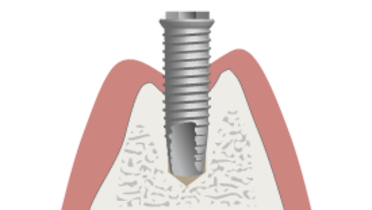-
0
Patient Assessment
- 0.1 Patient demand
- 0.2 Overarching considerations
- 0.3 Local history
- 0.4 Anatomical location
- 0.5 General patient history
-
0.6
Risk assessment & special high risk categories
- 5.1 Risk assessment & special high risk categories
- 5.2 age
- 5.3 Compliance
- 5.4 Smoking
- 5.5 Drug abuse
- 5.6 Recreational drugs and alcohol abuse
- 5.7 Parafunctions
- 5.8 Diabetes
- 5.9 Osteoporosis
- 5.10 Coagulation disorders and anticoagulant therapy
- 5.11 Steroids
- 5.12 Bisphosphonates
- 5.13 BRONJ / ARONJ
- 5.14 Radiotherapy
- 5.15 Risk factors
-
1
Diagnostics
-
1.1
Clinical Assessment
- 0.1 Lip line
- 0.2 Mouth opening
- 0.3 Vertical dimension
- 0.4 Maxillo-mandibular relationship
- 0.5 TMD
- 0.6 Existing prosthesis
- 0.7 Muco-gingival junction
- 0.8 Hyposalivation and Xerostomia
- 1.2 Clinical findings
-
1.3
Clinical diagnostic assessments
- 2.1 Microbiology
- 2.2 Salivary output
-
1.4
Diagnostic imaging
- 3.1 Imaging overview
- 3.2 Intraoral radiographs
- 3.3 Panoramic
- 3.4 CBCT
- 3.5 CT
- 1.5 Diagnostic prosthodontic guides
-
1.1
Clinical Assessment
-
2
Treatment Options
- 2.1 Mucosally-supported
-
2.2
Implant-retained/supported, general
- 1.1 Prosthodontic options overview
- 1.2 Number of implants maxilla and mandible
- 1.3 Time to function
- 1.4 Submerged or non-submerged
- 1.5 Soft tissue management
- 1.6 Hard tissue management, mandible
- 1.7 Hard tissue management, maxilla
- 1.8 Need for grafting
- 1.9 Healed vs fresh extraction socket
- 1.10 Digital treatment planning protocols
- 2.3 Implant prosthetics - removable
-
2.4
Implant prosthetics - fixed
- 2.5 Comprehensive treatment concepts
-
3
Treatment Procedures
-
3.1
Surgical
-
3.2
Removable prosthetics
-
3.3
Fixed prosthetics
-
3.1
Surgical
- 4 Aftercare
喫煙
Key points
- 喫煙は血管収縮作用があり、血液供給を減少させ、創傷治癒を損ないます。
- 喫煙者の歯周炎、ドライソケット、インプラント手術後合併症の発生率は、有意に高いです。
- 喫煙者に対しては、完全な禁煙、またはインプラント手術およびその他の外科治療の6週間以上前からの禁煙を強く推奨します。また、理想的には、長期的な成功の可能性を高めるために治療終了後も禁煙を推奨します。
喫煙およびニコチンが治療に与える影響
喫煙およびニコチン消費は、血管に対する収縮作用があり、それにより、血液供給を減少させます。また、歯周炎、ドライソケット、インプラント手術後の創傷治癒を含む創傷治癒合併症全般に対する感受性を高めます。
喫煙者は、歯周炎、インプラント周囲粘膜炎、抜歯およびあらゆる外科治療後の術後合併症の発生率が2~4倍高くなります。喫煙者はまた、骨粗しょう症の発生率も高いのですが、これは両方の病気を単独に生じやすくする社会・経済的要因による可能性も考えられます。
喫煙患者は、喫煙の創傷治癒に対する弊害、特に上顎におけるインプラント治療成功率の低下について理解する必要があります。インプラント手術前6週間以上、また、インプラント手術後8週間以上は禁煙する必要があります。そうすることにより、非喫煙者と同様の臨床成果を得ることができるのです。場合によっては、患者がこのような機会を捉えて完全に禁煙する可能性もあります。
喫煙の一般的なリスクについて患者に情報を伝えることも、オーラルヘルスケ提供者すべての役割です。具体的には、肺がん、慢性閉塞性肺疾患、心筋梗塞(2倍の頻度)、骨粗しょう症、生涯非喫煙者より短い平均余命です。
臨床トピック
Related articles
Additional external resources
Questions
ログインまたはご登録してコメントを投稿してください。
質問する
ログインまたは、無料でご登録して続行してください
You have reached the limit of content accessible without log in or this content requires log in. Log in or sign up now to get unlimited access to all FOR online resources.
FORウェブサイトにご登録していただきますと、すべてのオンライン・リソースに無制限にアクセスできます。FORウェブサイトへのご登録は無料となっております。


